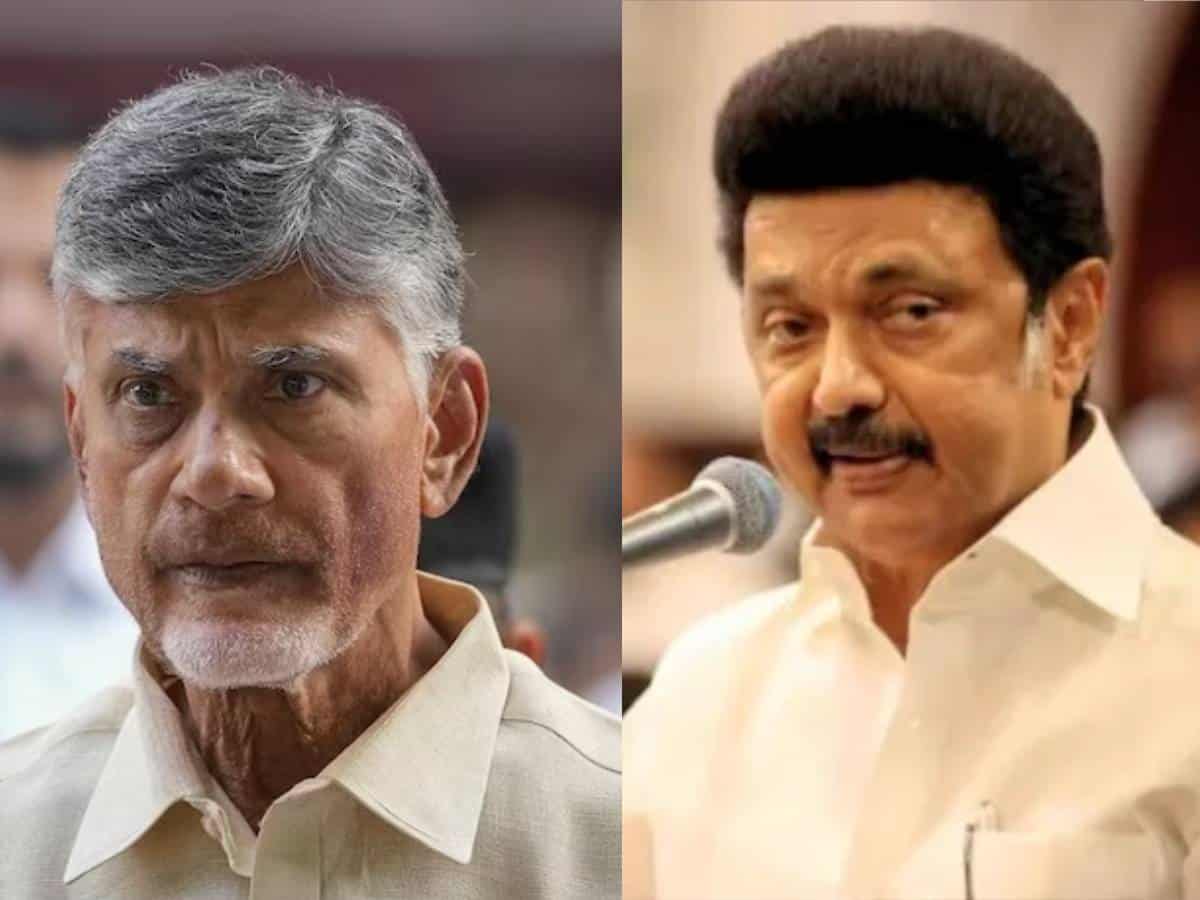
Two chief ministers, N Chandrababu Naidu and M K Stalin, respectively of Andhra Pradesh and Tamil Naidu must reconsider their advocacy of growing their populations. Naidu has asked that couples should have two or more children. This “more” is problematic. His counterpart in the neighbouring state has suggested an outrageous 16 children for couples. It could be a figure of speech but reveals the mindset.
Naidu’s intent is to plan for the future population, apparently driven by needing manpower to build Andhra Pradesh; after the breaking up of Andhra Pradesh into two, the other part being Telangana whose Hyderabad led the undivided state. The future, with an increasingly aged population, requires a bulge in the middle. In short, working towards a demographic dividend.
A country that has outpaced China in population should not strive to add to it. It would help if our population is stabilised and we manage to reach China’s status in development. If two developed states decide – AP has already decided – to walk backward it could be a democratic disaster though the aging population is indeed a worry. The existing demographic dividend is nothing without skilling people to be useful.
Mandating more than 2 children
While Naidu is willing to use a political platform to serve this cause, by wanting to make a law to mandate two or more children a requirement to contest elections to the local bodies, it may be useful to know that in Maharashtra, a third child is a liability when seeking to contest Panchayat Raj elections. Those who hid the third child were removed from the elected office.
If Naidu is moderate, Stalin is entirely in a dizzyingly different zone. Of course, he has not spoken of development and population and the link between the two. He straight away linked it to the number of MPs the state could elect to the Lok Sabha when the delimitation of constituencies is conducted, probably shortly, soon after the census is conducted. The 2021 census was avoided due to the COVID-19. Southern states are expected to lose seats.
The urging by these two policy-making constitutional officeholders can be self-defeating. Because, you have to reckon also with the existing population densities, crops and their availability to the population, and the vagaries that are emerging due to climate change which is already upon us and triggering extreme weather events. The events can upset the crop cycles and even drive the existing populations into hunger.
To my mind, the representation in the Lok Sabha is diminishing due to lowered population and the consequent increasing weightage that would go to more populous states is not as significant as keeping the pace of development alive. Instead of expecting other states to follow them, these southern states cannot convert themselves to mere breeders of children and weaken their growth stories.
Development is best contraceptive
It is worthwhile to recall what the late Ashish Ray, an eminent demographer told Indira Gandhi when she was preparing a speech to be delivered at the United Nations. “Development is the best contraception” was the line and the then-prime minister grasped it and wove it into her address. It can be asked if development led to contraception and thereby smaller families or if contraception helped better distribution of generated assets.
You develop a country – or a region or a swath of it – and people tend to have fewer children. The family’s well-being, the income that triggers and sustains it, etc. are the welcome spin-offs. Population control has helped the southern states to show better human development indices than those in the rest of the country.
Kerala, Karnataka, Andhra Pradesh, Telangana, Tamil Nadu are leaders in this spheres either by way of better HDI or what is also called development. These states have helped stabilize the national averages in population growth while some poorer states, instead of curbing it, have allowed it to grow.
Smaller population is better
Statistics can be reeled off, citing government figures and learned academic research but that would only fog the readers’ minds. The way businesses and industry prefer the southern states barring Kerala explains how development came their way. Smaller populations and development are a mutually supporting arrangement.
Naidu should understand that Bihar, for instance, because of its poor indices and development wants to be considered a state with a ‘special status’. Babu himself had been asking for such a status. It is a fact that developed states generate more income and they are not retained by them but go to those that are poorer.
India has come a long way from the assessment of population issues from what Ray had himself said a decade ago. “There is a huge democratic inertia so we did nothing.” The forced sterilization during the Emergency “discredited” the Family Planning programme”. The Morarji Desai government said “Let us not touch this subject. It will give us a bad name.”
But the southern states bashed on regardless and other states, however, bothered little to follow their examples. Despite the small size of Kerala which accounts for about four to five percent of the country’s population, it limited its population. Now, these two chief ministers should not upend the progress.

